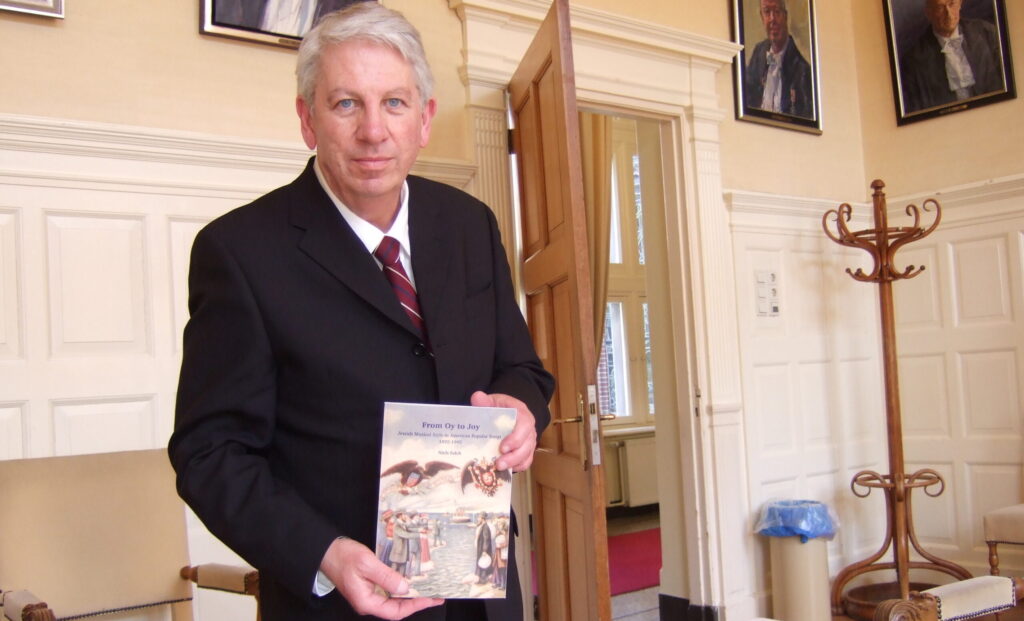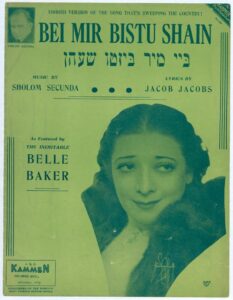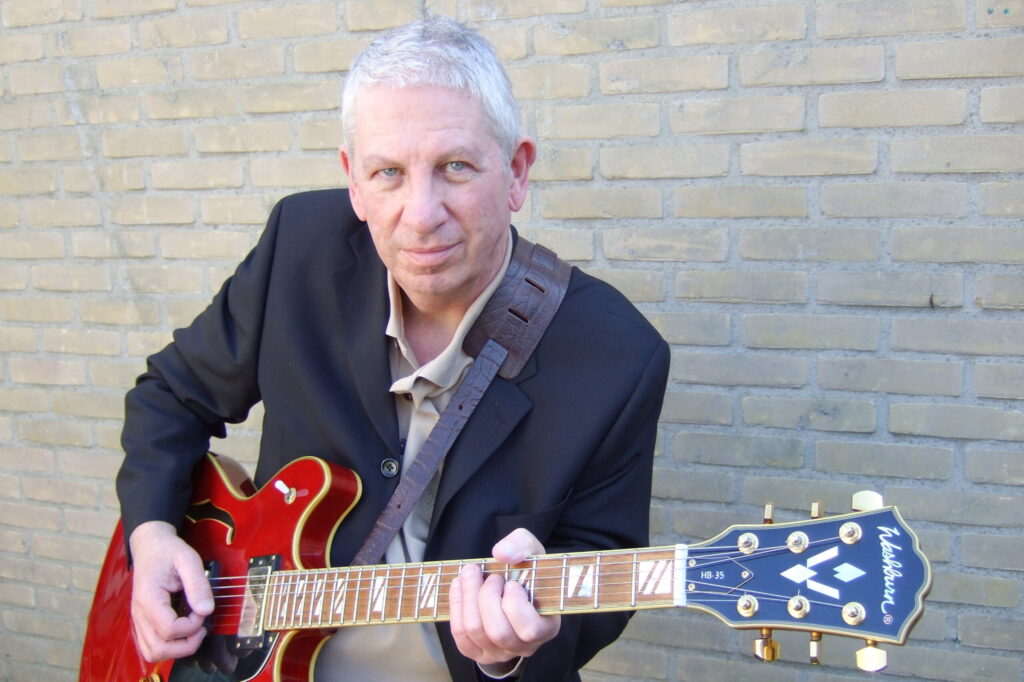By Niels Falch
In the early years of this millennium, I went to search for my Jewish background and identity, attending synagogues, Jewish festivals and parties, and learning about Jewish customs. I soon noticed similarities between Jewish music and certain popular songs. I was convinced; there must undoubtedly be tons of literature about this resemblance. Surprisingly, after extensive exploration of the Internet, I was amazed to discover that there seems to be little research about this topic. Subsequently, I went on a musical and academic journey, which had everything to do with my musical background. My early childhood musical experiences and emotions certainly left a blueprint in my brain. The strong emotional tension of my parents hearing and making music in the 1960s determined my emotional reference and expectation with music for the rest of my life. This process must have probably been the same as during the childhood of Jewish American songwriters with an immigrant background in the early twentieth century. Because of the pogroms at the end of the nineteenth century, numerous Russian and East European Jews wished or were forced to emigrate to America, Palestine, and other countries in Western Europe. Within forty years, America took in two million Jews from Russia and other countries in Eastern Europe.

Last May, almost twenty years later, I successfully defended my doctoral thesis From Oy to Joy: Jewish Musical Style in American Popular Songs, 1892-1945 in a partly online ceremony due to COVID-19 at the University of Groningen in the Netherlands. I argue that in the first half of the twentieth century, Jewish immigrants from Russia and Eastern Europe and their descendants collectively developed a Jewish musical style that would alter American popular music.
 Composers such as Harold Arlen, Irving Berlin, George Gershwin, and Jerome Kern drew (consciously and subconsciously) upon stereotypical elements from the broad spectrum of Ashkenazic (East European) Jewish music. They incorporated features from cantillation, wedding music, and folk songs, first into Yiddish theater songs, and later into Broadway musicals and musical films. During the 1930s, songwriters wrote hit songs reflective of this Jewish musical style including “Bei Mir Bist Du Schön,” “Blue Skies,” “Donna Donna,” “I Love You Much Too Much,” “My Heart Belongs to Daddy,” and “Summertime” (which was derived from an old Yiddish beggar song). However, since then, this style of songwriting has not been systematically analyzed, nor conceptualized as a historically relevant musical style to other popular music stylistic developments.
Composers such as Harold Arlen, Irving Berlin, George Gershwin, and Jerome Kern drew (consciously and subconsciously) upon stereotypical elements from the broad spectrum of Ashkenazic (East European) Jewish music. They incorporated features from cantillation, wedding music, and folk songs, first into Yiddish theater songs, and later into Broadway musicals and musical films. During the 1930s, songwriters wrote hit songs reflective of this Jewish musical style including “Bei Mir Bist Du Schön,” “Blue Skies,” “Donna Donna,” “I Love You Much Too Much,” “My Heart Belongs to Daddy,” and “Summertime” (which was derived from an old Yiddish beggar song). However, since then, this style of songwriting has not been systematically analyzed, nor conceptualized as a historically relevant musical style to other popular music stylistic developments.
Building on the methods of Kolinski, Lomax, and Huron, I compared traits of Ashkenazic Jewish music to American popular songs using and coining the Period Table of (Jewish) Musical Elements, which I based on Mendeleev’s Periodic Table of Chemical Elements. Besides, I have used new terms such as “Jewish musical style,” “Jew notes” (versus blue notes), “happy minor,” and “songscape.” I’m also reviving the concept of “musical code-switching.”

In the Jazz Age, composers used the minor mode not only to express a feeling of sadness but also to evoke other moods. In my research, I coin the contextual purpose of five different moods of minor modes in American popular song in the first thirty years of the twentieth century. The five “minor moods” are (1) sad minor, (2) nostalgic or melancholy minor, (3) oriental minor, (4) exotic minor, and (5) happy minor. In the late 1920s, Jewish songwriters introduced the “happy minor” to indicate a joyous up-tempo tune with “nothing to worry” lyrics, such as “Blue Skies,” and the chorus of “My One and Only.” This musical style was derived from Russian and East European Jewish folk songs, and Yiddish theater songs. The happy minor is often alternated with major to refer to the mood of a mainstream American song (such as Stephen Foster-like “old songs”) which is a form of musical code-switching.
The culmination of the Jewish musical style took place at the end of the 1930s when the song “Bei Mir Bist Du Schön” by the Andrews Sisters conquered the world. If you analyze this song musically you will come across many elements that you also hear in traditional Jewish music such as the rising minor sixth, the mid-tempo minor mode, room for a clap/patch, and the bulgar rhythm. The Jewish music style became so popular at one point that African American artists like Cab Calloway, Slim and Slam, and even Billie Holiday sang songs in this style. Besides, the non-Jewish Cole Porter wrote a repertoire of what he called “Jewish tunes.” I argue that we are therefore listening and writing songs with different ears to minor and major keys in popular music.
About Niels Falch
 Niels Falch is an independent researcher of Jewish American popular music in the Netherlands and a guest blogger at the Recorded Sound Archives (RSA) part of the Florida Atlantic University Libraries (FAU). In his youth, Niels played guitar and keyboards in symphonic-rock and jazz-rock bands. After studying at the conservatories in Amsterdam and Enschede, Falch then worked as a sound engineer, music producer, music compiler, songwriter, and music teacher. Niels attended a Creative Directorship course at Leiden University and completed with distinction online courses from Stanford University and the University of Rochester. Scientifically, Niels Falch is interested in popular music, Jewish music, jazz, songwriting, musicals, and forensic musicology.
Niels Falch is an independent researcher of Jewish American popular music in the Netherlands and a guest blogger at the Recorded Sound Archives (RSA) part of the Florida Atlantic University Libraries (FAU). In his youth, Niels played guitar and keyboards in symphonic-rock and jazz-rock bands. After studying at the conservatories in Amsterdam and Enschede, Falch then worked as a sound engineer, music producer, music compiler, songwriter, and music teacher. Niels attended a Creative Directorship course at Leiden University and completed with distinction online courses from Stanford University and the University of Rochester. Scientifically, Niels Falch is interested in popular music, Jewish music, jazz, songwriting, musicals, and forensic musicology.

Is it possible to get a virtual copy of your dissertation Oy to Joy?
@Henk, you can leave your email address and affiliation at my email address at the University of Groningen.